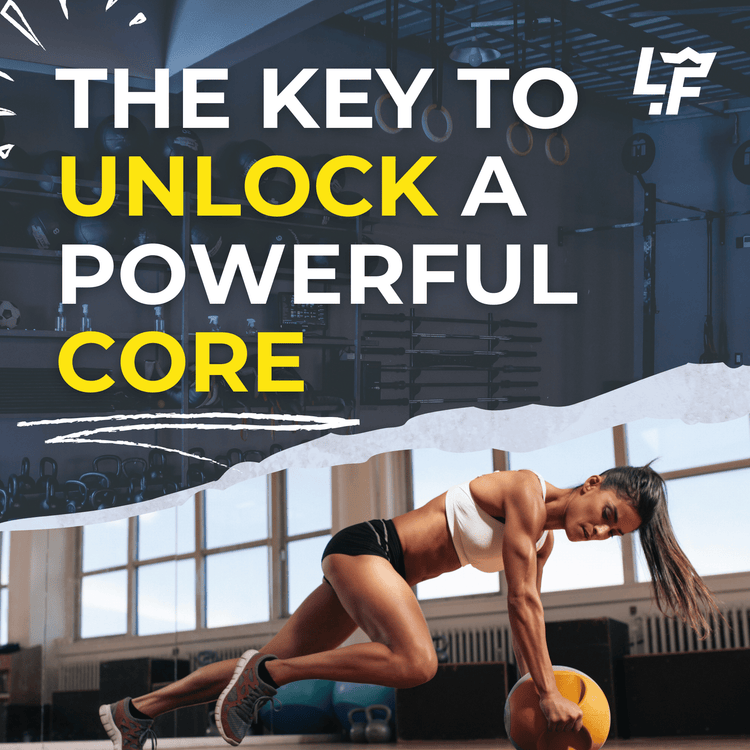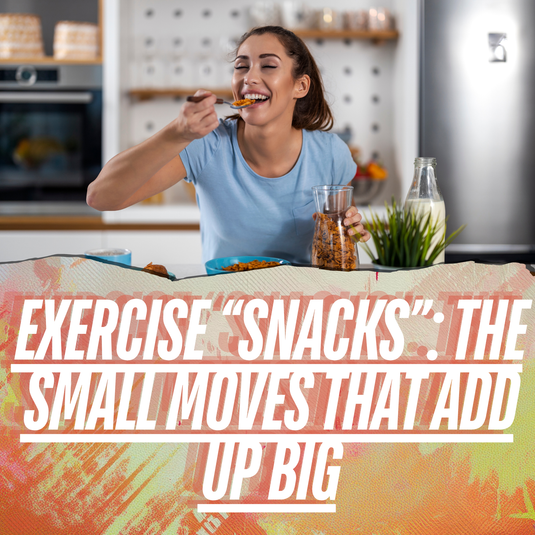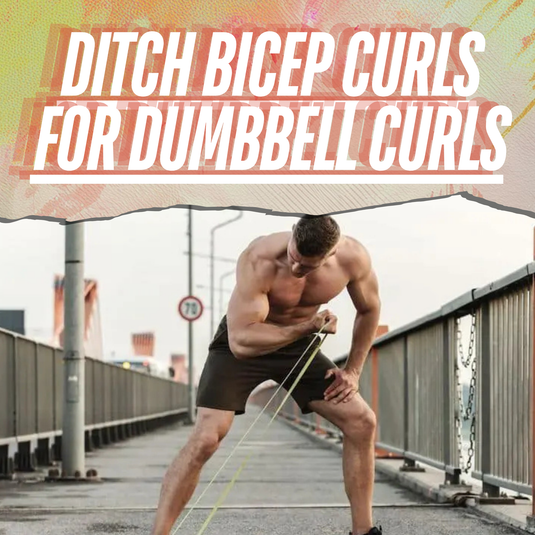The Key To Unlocking a Powerful Core

⏱️ Estimated Read Time: 6 minutes
🧠 TL;DR
- The Key To Unlocking a Powerful Core offers effective, accessible movements for targeted results.
- This guide is designed to help you move smarter, build strength, and stay consistent.
✍️ Summary
This post explores the key to unlocking a powerful core in a way that’s actionable and easy to follow. Whether you're new to this style of training or leveling up, it includes practical takeaways for your routine.
📚 Table of Contents
In pursuing holistic well-being, functional fitness is a philosophy that transcends conventional exercise routines. It focuses on movements that mirror our daily activities, underlining the importance of a strong core. As we delve into the significance of core strength, it's crucial first to understand the essence of functional fitness—a lifestyle that seamlessly integrates movement into our everyday lives. Functional fitness isn't just a trend; it's a transformative approach to exercise that goes beyond the confines of the gym.
Real-World Examples
To truly appreciate the importance of a robust core, consider the scenarios of effortlessly lifting grocery bags, chasing after children at the park, or maintaining independence as we age. These real-world examples vividly illustrate how a strong core is not just about aesthetics but a fundamental component of a life well-lived. Dr. John Smith, a renowned sports physiologist, emphasizes, "A strong core is the foundation for optimal performance in daily activities. It's not just about looking fit; it's about being functionally fit."
Anatomy of the Core
Understanding the anatomy of the core is foundational to practical training. The core comprises the rectus abdominis, obliques, transverse abdominis, and deeper muscles such as the multifidus and erector spinae. Visual aids, such as anatomical diagrams, reveal the interconnectedness of these muscles. Dr. Sarah Johnson, a leading anatomist, notes, "The core acts as a stabilizing force for the spine and pelvis, facilitating coordinated movements and reducing the risk of injury."

Source
Which Muscles Benefit From Core Exercises?
Rectus Abdominis
The rectus abdominis, known as the "six-pack," is a superficial muscle running vertically along the abdomen.
Benefits: Strengthening the rectus abdominis through exercises like crunches and leg raises enhances spinal flexion, promoting a toned and defined midsection.
Obliques
The obliques are on the sides of the abdomen, consisting of internal and external layers.
Benefits: Targeting the obliques with exercises such as Russian twists and side planks enhances rotational and bending movements, contributing to a well-defined waistline.
Transverse Abdominis (TVA)
The transverse abdominis (TVA) is the deepest layer of the abdominal muscles, forming a natural corset around the abdomen.
Benefits: Strengthening the TVA through exercises like planks and vacuum exercises provides essential stability to the spine, supporting overall core strength and posture.
Want to Try Workout Programs That Burn Fat and Gain Muscle? Get Access to 40+(and counting!) Different Programs + Create Your Own With a Workout Generator! Follow on desktop or mobile!
Multifidus
The multifidus muscles run along the spine, which is crucial to spinal stability.
Benefits: Targeting the multifidus with exercises like bird-dog and Superman exercises enhances spine support, reducing the risk of back-related issues and improving posture.
Erector Spinae
The erector spinae muscles run parallel to the spine, contributing to back extension and overall spine support.
Benefits: Engaging the erector spinae through exercises like back extensions and deadlifts improves back strength, aids in maintaining an upright posture, and prevents lower back pain.
Hip Flexors
The hip flexors are a group of muscles at the front of the hip joint responsible for hip movement.
Benefits: Strengthening the hip flexors with exercises like mountain climbers and leg raises enhances hip stability, supporting overall mobility and functional movement.
Pelvic Floor Muscles
The pelvic floor muscles form a supportive hammock at the base of the pelvis, playing a vital role in pelvic organ support.
Benefits: Exercises like Kegels and bridges help strengthen the pelvic floor muscles, contributing to better bladder control, pelvic stability, and overall core strength.
Core-Strengthening Exercises
Planks
Planks are the cornerstone of core stability, engaging the entire core musculature. Scientifically proven to activate the rectus abdominis, obliques, and transverse abdominis simultaneously, planks offer a foundational exercise for a strong core. Using armspinfit equipment can add variety and resistance to your plank exercises, enhancing your workout experience.
Benefits
- Improved core stability and endurance.
- Enhanced spine alignment, reducing the risk of back pain.
How To Do Planks
- Start in a plank position with elbows beneath the shoulders.
- Maintain a straight line from head to heels, engaging the Plank: Rotate the body to one side, supporting yourself on one arm.
- Plank with Shoulder Taps: Tap each shoulder with the opposite hand in the plank position.
Variations
- Side Plank: Rotate the body to one side, supporting yourself on one arm.
- Plank with Shoulder Taps: Tap each shoulder with the opposite hand in the plank position.
Russian Twists
Russian twists activate the obliques, crucial for rotational movements. This exercise not only strengthens the core but also improves overall torso flexibility.
Benefits
- Targeted oblique strengthening.
- Improved rotational stability.
How To Do Russian Twists
- Sit on the floor, leaning back at a 45-degree angle.
- Twist the torso to one side, touching the ground with both hands.
Variations
- Weighted Russian Twists: Hold a weight or medicine ball for added resistance.
- Leg Raises with Twists: Lift the legs off the ground while performing twists.
Mountain Climbers
Mountain climbers bring dynamism to core training, incorporating cardio elements. This exercise engages the entire core and boosts heart rate for added calorie burn.
Benefits
- Increased cardiovascular endurance.
- Intensive engagement of the rectus abdominis.
How To Do Mountain Climbers
- Begin in a plank position.
- Alternate bringing each knee toward the chest in a running motion.
Variations
- Cross-Body Mountain Climbers: Bring each knee across the body to the opposite elbow.
- Spiderman Climbers: Incorporate a side twist by bringing the knee towards the elbow.
Leg Raises
Leg raises target the lower abdominal muscles, providing a comprehensive workout for the core's lower region.
Benefits
- Strengthening of the lower rectus abdominis.
- Improved, more inadequate abdominal definition.
How To Do Leg Raises
- Lie on your back with your legs straight.
- Lift legs toward the ceiling, then lower them without touching the ground.
Variations
- Flutter Kicks: Alternately kick each leg up and down.
- Bent-Knee Leg Raises: Perform the exercise with knees slightly bent.
Bicycle Crunches
Bicycle crunches combine the benefits of traditional crunches with the added element of rotation, engaging both the upper and lower core muscles.
Benefits
- Targeted activation of the rectus abdominis and obliques.
- Improved coordination and balance.
How To Do Bicycle Crunches
- Lie on your back, hands behind your head.
- Bring one knee towards the chest while twisting the torso to touch the opposite elbow.
Variations
- Reverse Bicycle Crunches: Perform the motion in the opposite direction.
- Weighted Bicycle Crunches: Hold a weight or medicine ball during the exercise.
Want to Try Workout Programs That Burn Fat and Gain Muscle? Get Access to 40+(and counting!) Different Programs + Create Your Own With a Workout Generator! Follow on desktop or mobile!
Superman
The Superman exercise emphasizes the importance of back extension, contributing to a well-rounded core workout.
Benefits
- Strengthening of the erector spinae muscles in the lower back.
- Improved posterior chain activation.
How To Do Superman Exercise
- Lie face down with arms extended in front.
- Lift the arms, chest, and legs off the ground simultaneously.
Variations:
- Alternating Superman: Lift one arm and the opposite leg simultaneously.
- Superman Plank: Start in a plank position, then lift one arm and the opposite leg.
Hollow Body Hold
Hollow Body Hold
The hollow body hold is an isometric exercise that engages the entire core, promoting endurance and stability.
Benefits
- Full-core engagement, including the rectus abdominis and transverse abdominis.
- Improved body awareness and control.
How To Do Hollow Body Hold
- Lie on your back with arms and legs extended.
- Lift arms and legs off the ground, creating a slight 'U' shape with the body.
Variations
- Hollow Body Rocks: Add a rocking motion while maintaining the hollow position.
- Tuck Hollow Hold: Bring knees toward the chest while holding the hollow position.
Safety Tips for Effective Performance
Executing core exercises with proper form is paramount. Dr. Michael Davis, a physical therapist, emphasizes, "Poor form not only reduces effectiveness but increases the risk of injury." Understanding the biomechanics of each exercise ensures optimal engagement of core muscles.
Incorporating Core Work into Workouts
Functional Integration
Exercises should mimic real-world movements to enhance the functional aspect of core training. For instance, incorporating twisting exercises, like Russian twists, mirrors the rotational movements encountered in daily activities. This functional integration enhances the transfer of strength to practical scenarios. Including workouts such as the xhit arms workout can complement your core routine, providing a comprehensive fitness approach.
Timing and Frequency Recommendations
Determining the optimal timing for core work is crucial. A consensus statement from the American College of Sports Medicine suggests incorporating core exercises two to three times per week. This frequency strikes a balance between consistency and allowing sufficient recovery for muscle adaptation.
Cross-Training for Comprehensive Benefits
Combining core exercises with other forms of exercise amplifies fitness benefits. Dr. Emily Turner, a sports physiologist, explains, "Cardiovascular exercises, such as running or cycling, complement core training by enhancing overall endurance and stamina." This synergy contributes to a well-rounded fitness routine.
Core Workout Plan

Beginner Level Core Workout Plan
Warm-Up (5 minutes)
- Jumping Jacks: 1 minute
- High Knees: 1 minute
- Arm Circles: 2 minutes
- Bodyweight Squats: 1 minute
Core Exercises (20 minutes)
- Plank: 3 sets of 30 seconds
- Focus on maintaining a straight line from head to heels. Rest for 15 seconds between sets.
- Russian Twists: 3 sets of 15 reps (each side)
- Use bodyweight to twist the torso from side to side. Keep movements controlled for optimal engagement.
- Mountain Climbers: 3 sets of 20 reps
- Alternate bringing knees toward the chest in a running motion. Maintain a steady pace.
- Leg Raises: 3 sets of 12 reps
- Lie on your back, lift your legs toward the ceiling, and lower them without touching the ground.
- Bicycle Crunches: 3 sets of 15 reps (each side)
- Twist your torso, bringing one knee towards the chest while touching the opposite elbow.
Cool Down (5 minutes)
- Child's Pose: 2 minutes
- Cat-Cow Stretch: 2 minutes
- Seated Forward Bend: 1 minute
Intermediate Level Core Workout Plan
Warm-Up (7 minutes)
- Jump Rope: 2 minutes
- Dynamic Lunges: 2 minutes
- Arm Circles: 2 minutes
- Bodyweight Squats: 1 minute
Core Exercises (25 minutes)
- Plank with Shoulder Taps: 3 sets of 45 seconds
- In the plank position, tap each shoulder alternately. Maintain a stable plank throughout.
- Russian Twists with Weight: 3 sets of 20 reps (each side)
- Use a weight or medicine ball to add resistance. Twist the torso while holding the weight.
- Cross-Body Mountain Climbers: 3 sets of 25 reps
- Bring each knee across the body to the opposite elbow. Increase the pace for added intensity.
- Leg Raises with a Twist: 3 sets of 15 reps
- Add a twist at the top of the leg raise, engaging the obliques. Control the movement.
- Bicycle Crunches: 3 sets of 20 reps (each side)
- Increase the speed of the bicycle crunches while maintaining proper form.
Cool Down (8 minutes)
- Downward Dog: 2 minutes
- Cobra Stretch: 2 minutes
- Seated Spinal Twist: 2 minutes
- Butterfly Stretch: 2 minutes
Advanced Level Core Workout Plan
Warm-Up (10 minutes)
- Jump Rope: 3 minutes
- Dynamic Lunges: 3 minutes
- Arm Circles: 2 minutes
- Bodyweight Squats: 2 minutes
Core Exercises (30 minutes)
- Plank with Alternating Leg Lifts: 4 sets of 45 seconds
- Lift one leg at a time while maintaining a plank position. Alternate legs.
- Weighted Russian Twists on Stability Ball: 4 sets of 20 reps (each side)
- Perform Russian twists while holding a weight, seated on a stability ball for added instability.
- Spiderman Climbers: 4 sets of 30 reps
- Bring each knee towards the elbow in a controlled manner. Maintain a steady rhythm.
- Hanging Leg Raises: 4 sets of 15 reps
- Hang from a bar and lift your legs towards the ceiling. Control the descent for maximum effectiveness.
- Windshield Wipers: 4 sets of 20 reps (10 on each side)
- Lie on your back, legs elevated. Rotate legs from side to side in a controlled manner.
Cool Down (10 minutes)
- Pigeon Pose: 3 minutes
- Thread the Needle Stretch: 3 minutes
- Standing Forward Bend: 2 minutes
- Quadratus Lumborum Stretch: 2 minutes
This progression guide ensures a systematic and challenging approach for individuals at different fitness levels, utilizing the seven core exercises to build strength and functionality. Remember to modify as needed and focus on maintaining proper form throughout each session.
Want to Try Workout Programs That Burn Fat and Gain Muscle? Get Access to 40+(and counting!) Different Programs + Create Your Own With a Workout Generator! Follow on desktop or mobile!
Nutrition and Recovery

Fueling Core Strength
A strong core is built on more than just exercise; Nutrition plays a pivotal role. Adequate protein intake supports muscle repair and growth, while a well-balanced diet provides essential nutrients for overall health. Dr. Michelle Rodriguez, a registered dietitian, affirms, "Nutrition is the fuel for your workouts. A balanced diet ensures your core muscles get the nutrients they need to thrive."
Hydration's Role
Often overlooked, hydration is fundamental to optimal performance. Dehydration can impair muscle function and hinder exercise efficiency. Research published in the Journal of the International Society of Sports Nutrition underscores the importance of staying well-hydrated for sustained physical performance.
Recovery Strategies
Recovery is an integral part of any fitness journey. Quality sleep, stretching, and massage aid in muscle recovery and reduce the risk of overuse injuries. A sports recovery specialist, Dr. Alex Turner, notes, "Sleep is when your body undergoes repair and regeneration. Prioritizing recovery practices ensures your core stays resilient."
Conclusion
In conclusion, a strong core is not merely a fitness goal but a cornerstone of functional fitness and overall well-being. As we reflect on the anatomy of the core, the nuances of practical exercises, and the integration of core work into our routines, it becomes evident that a strong core is a dynamic asset. Dr. Lisa Harris, a leading expert in biomechanics, encapsulates this sentiment, saying, "A strong core isn't just about strength; it's about optimizing the body's mechanics for a resilient and functional life."
Helpful Resources
-
Be alerted when we publish more like this to our blog here
-
Daily workout plans here
-
Fitness Equipment like sliders, barbells, resistance bands here
-
Free bodyweight workouts here
-
Follow along with $1 video workouts here
Want more guidance? Check out our Weekly Dumbbell Workout #1.
📝 FAQs
How often should I do these exercises? +
2–3 times per week is a good starting point for most people.
Do I need equipment? +
Many of these can be done with just your bodyweight or a single kettlebell or dumbbell.
Can beginners do these routines? +
Yes! These movements are designed to scale with your fitness level.






